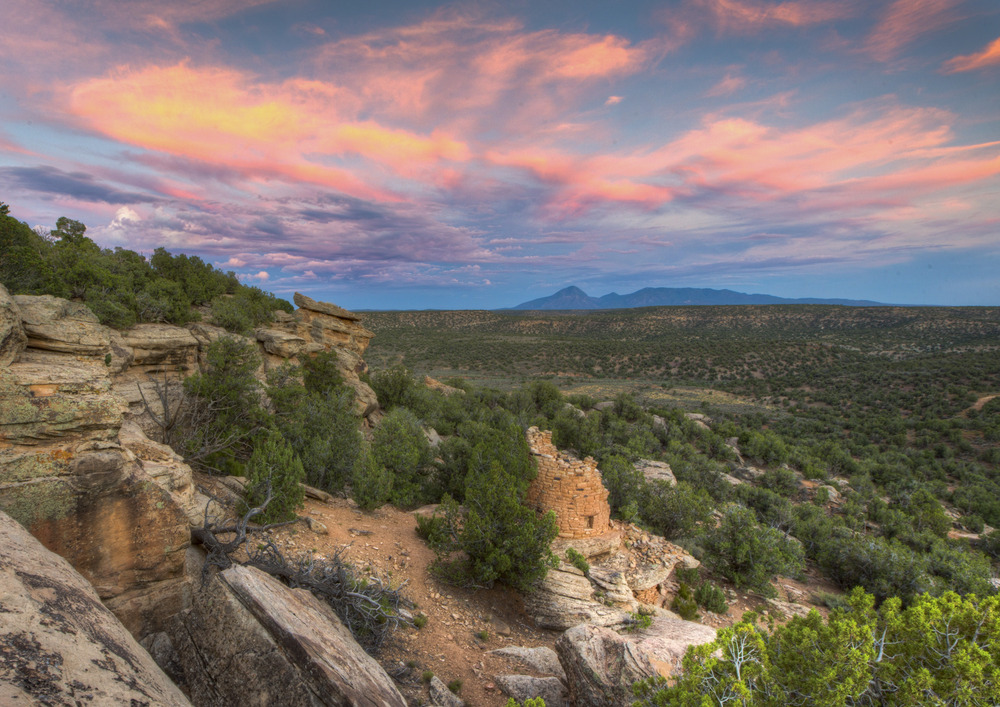The Local newsletter is your free, daily guide to life in Colorado. For locals, by locals.
Colorado’s Canyons of the Ancients National Monument was spared from the chopping block, according to a recent New York Times report on the fate of 27 National Monuments under review by U.S. Interior Secretary Ryan Zinke. However, Zinke did recommend shrinking four national monuments, two of which are in Utah.
Zinke’s long-awaited recommendations come after President Donald Trump in April called for a review of all national monuments of at least 100,000 acres created after 1996, the year President Bill Clinton designated the controversial Grand Staircase Escalante National Monument in Utah. Trump framed the national monuments review as hunting for “abuses” of the Antiquities Act, the century-old law that grants U.S. presidents the authority to designate national monuments to protect lands of historic or scientific significance.

Of the two Utah monuments Zinke recommends shrinking, Bears Ears National Monument, designated by President Barack Obama in the final month of his administration, is rumored to be in the most peril. According to the New York Times report, Zinke is calling for Bears Ears to be reduced by nearly 90 percent, from 1.35 million acres to roughly 160,000.
With just 30 miles separating Bears Ears and Colorado’s Canyons of the Ancients, the archeological value and spiritual significance of the two monuments are largely one in the same.
Today, oil and gas developers aren’t thought to be eyeing the land of either monument, according to conservation experts, so why carve up Utah’s Bears Ears while leaving Canyons of the Ancients intact?
Details of Zinke’s recommendations have yet to be formally released, but Conservation Colorado wilderness and public lands advocate Scott Braden suspects the Trump administration’s motivation has more to do with political chess in Washington than with the land.
“Before Bears Ears was created, there was a marked lack of drilling activity and leasing activity on public land in the foot print of Bears Ears,” Braden says. “I think it’s really more about a cultural and ideological appeasement for certain political actors in Utah.”
Gavin Noyes, executive director of Utah Diné Bikéyah, a Salt Lake City-based advocacy group for local tribes and conservation, says the shrinking of Bears Ears would be particularly egregious because the monument is extremely important to the native people and its creation represented a shift by the federal government to include native stakeholders when designating monuments and planning for their management.
“It’s really unique compared to other monuments in how this monument does a good job in honoring tribes and inviting them to bring forward some of their traditional knowledge that might help us manage and steward these landscapes and others where they’ve lived and stewarded for time immemorial,” Noyes says. “That opportunity would be greatly harmed by diminishing this monument by that much.”

In the American west, where huge swathes of land are owned and managed by the federal government—36 percent of Colorado’s land and 65 percent of Utah’s—returning publicly managed land to local hands is politically popular among some Republicans.
A leader of the charge for privatization in the West, Republican Sen. Orrin Hatch of Utah praised Zinke’s recommendations. In a statement posted on his website Thursday, Hatch pledged his support to the Trump administration through the continuation of the review process. “What we have seen throughout the monument review process is a concerted effort to give the people of Utah a voice in the protection of Utah lands. While Utah’s national monuments are a prime example of Antiquities Act Abuse, President Trump and Secretary Zinke are working to correct those past abuses and focus on the original meaning and intent of the law.”
On the other hand, a recent study looking at all 1.3 million public comments received since Trump directed Zinke to review the monuments found that 99 percent of feedback was opposed to eliminating or weakening these areas. Colorado politicians on both sides of the aisle support federal guardianship of public lands. Here, the 36 percent of our state that is federally held is largely regarded as economically valuable for the tourism and recreation industries the land enables, and as a popular quality of life enhancement to residents—Republican, Democrat, or otherwise.
“Our politicians have a different orientation to public lands, regardless of party,” Braden says. “The governor and both of our senators, as well as Representative [Scott] Tipton, who is typically no giant public lands advocate, were all speaking with one voice [to protect Canyons of the Ancients]. They know that in Colorado, these things are sacrosanct.”








